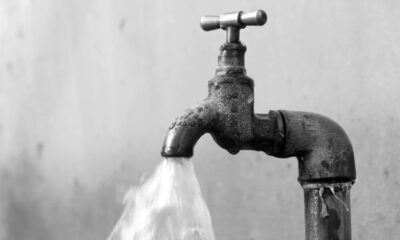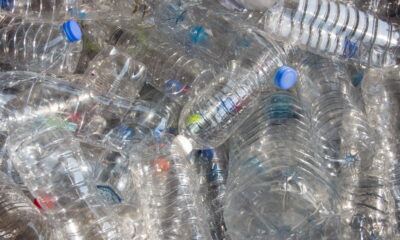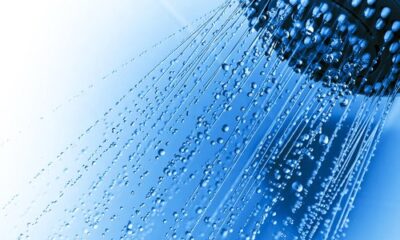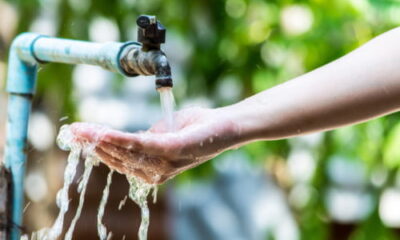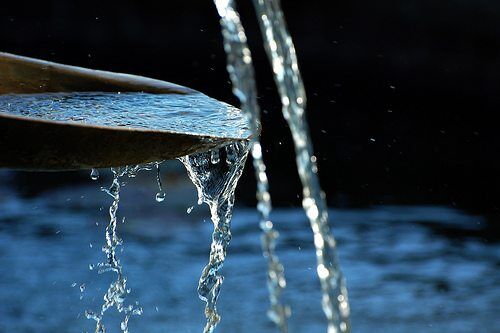

Energy
Green Water Systems Can Cut Water Costs by 40%
Americans are becoming more concerned about green living than ever before. However, many of them have a hard time taking the plunge, particularly when it comes to using green watering solutions. If you are on the fence, you should know that you can save a lot of money by finding a greener way to provide water to your home.
Green Watering Devices Are a Massive Money Saver
Do you know how much money you spend on water every year? According to the EPA, the average family spends $1,000. That is a noticeable chunk of your budget.
The EPA also estimates that some green watering devices can save you $380 a year. That is a lot of money to the average homeowner.
Green Watering is the Latest Way for People to Go Green, but Other Ideas Are in the Pipeline
A great number of us make conscious efforts to conserve the resources of our planet. We recycle our paper, plastic, and aluminum products; shut off lights when we leave a room; switch to compact fluorescent bulbs; take our own bags to the grocery store; carpool to work or walk instead of drive.
It’s easy to become overwhelmed with “green” information, but reducing our ecological footprint on earth is not as difficult as you may think. Going green simply means using what is necessary and no more. Small steps can produce big changes when it comes to the environment.
Creating a healthier, more planet-friendly home isn’t just a good deed, it’s an opportunity. Choosing energy-efficient appliances benefits more than just the environment; it can improve your quality of life and save you money.
If the goal is to use less energy, less electricity, and less water, what options do we have when it comes to our home’s appliances? We all use a great deal of water and energy in our daily lives. To reduce the environmental impact of your energy use, the best place to start is in examining how your appliances operate.
Energy-Efficient Appliances
As our reliance on machines increases, choosing energy-efficient systems has become particularly important. Updated technology, along with national standards, have contributed to vast improvements in appliance performance. Purchasing the right products, in addition to using appliances in an eco-wise manner, will save energy and money.
As people become more concerned with healthy living, new appliances will hit the market, such as tools to dispense nutritional information and water softeners to reduce mineral levels.
Many of these products will be more energy efficient. The average household appliance consumes about 1,000 watts, so energy conscious homeowners will be under pressure to find more energy efficient versions to minimize their carbon footprint.
There are dozens of types of energy-efficient appliances offering green solutions to reduce household consumption. A high-efficiency softener, for example, is a green water system. Given that hard water is a major concern in nearly 85% of homes throughout the U.S., many families turn to water softeners to supply cleaner, healthier water throughout their homes.
While all softening systems need water and salt to operate, not all are created equal when it comes to waste production and energy conservation. If a softening system is always using salt and water, how is it possible that water softeners are green water systems?
First, when you remove the hardness minerals from your water supply, your appliances can operate more efficiently. This saves water and energy. Also, when you eliminate hard water, you’re removing the build-up of scale which prolongs the life of your appliances and keeps them out of our country’s landfills.
Consequently, although softeners use salt and water to regenerate, a high-efficiency upflow system like the Genesis On Demand uses precisely the amount of salt and water necessary; it always runs as efficiently as possible, without waste.
Upflow Technology for High-Efficiency Usage
The capacity of your water softener, how you maintain it, and how it operates, all affect how much energy is used. For example, a water softening system using older downflow technology may use more than double the amount of salt and water than leading brands like the Genesis water softener using modern upflow technology.
A water softener uses resin beads charged with salt in a tank. As water passes through the resin, the hard minerals are removed and exchanged with sodium. After the resin loses its ability to dispose of the minerals, it must be “recharged” with more salt during a regeneration cycle. This cycle, when combined with a backwash cycle, can use a significant amount of water.
Systems using older downflow brining requires hard water to enter from above the resin bed and flow throughout the resin to complete the ion-exchange process for softening. This presents a problem, as the direction of the incoming water compacts the media and prevents full softening capacity. It also causes more frequent regeneration, creating far greater waste than necessary.
Green water systems, such as the Genesis water softener line, uses new upflow technology in which water is directed in an up-flow direction, entering the system tank and moving through the upper basket before traveling down again through a tube in the center of the tank.
The water then gets distributed throughout the lower basket providing a better discharge of impurities and eliminating the need for backwashing every regeneration on municipal water. That is a 90% reduction in backwash cycle water use. Upflow softeners reduce salt and water usage by regenerating the precise amount needed and producing significantly less waste.
On-Demand vs. Timered Softeners
The key to a greener water softener is in on-demand, up-flow technology. If you have an older, timered softener, replacing it with a new, high-efficiency on-demand softener will provide your family with a cost-effective answer to hard water troubles.
A Genesis Premier Upflow On Demand system works on an as-needed basis, calculating the regeneration amount just before exhausting capacity, guaranteeing an uninterrupted flow of softer, cleaner water for a fraction of the cost.
Timered softeners regenerate at predetermined schedules regardless of water usage. Since we don’t use the same amount of water each day, it’s nearly impossible to program timed regeneration settings correctly, leaving homeowners with no choice but to either use hard water, or regenerate unnecessarily, wasting a great deal of water, salt, and energy.
When on-demand softening systems regenerate, it’s based on need instead of a preset schedule. Using innovative upflow technology in an on-demand system reduces salt usage by as much as 75% and water usage by 65% over standard downflow meter regeneration type models. It also requires less maintenance and fewer repairs. This superb energy efficiency goes a long way in saving money and the environment.
The savings in soap and cleaning products are also factors to consider. An added benefit is fewer chemicals into the environment. Using far less product to achieve cleanliness means less cost and less soap down the drain.
Most people choose eco-friendly products but that is not always an option, especially when trying to remove scale build-up. Calcium and lime removal can only be effectively done through harsh chemicals which are acid based. Installing a water softener eliminates the need for those products.
If you’re ready to make changes in your home to promote a greener lifestyle, and you’re in the market for an energy-efficient softener, you may be wondering: How much does a water softener cost and what size water softener do I need? Determining water quality and usage will help define the correct system for any home or business. A water quality expert can help guide you through the process.
Green Choices are Good Choices
Living green doesn’t just positively impact our planet, it also protects you and your family. Eco-friendly products like high-efficiency salt and water saving softeners deliver soft water to your home and prevent wasteful consequences.
Green systems lower energy bills, extend the life of your appliances, and preserve our natural resources. Environmentally conscious decisions add up. When we make responsible choices for our planet, we’re also reaping the long-term benefits for ourselves. The greener your appliances, the greener your wallet.


 Environment10 months ago
Environment10 months agoAre Polymer Banknotes: an Eco-Friendly Trend or a Groundswell?

 Environment11 months ago
Environment11 months agoEco-Friendly Home Improvements: Top 7 Upgrades for 2025

 Features9 months ago
Features9 months agoEco-Friendly Cryptocurrencies: Sustainable Investment Choices

 Features10 months ago
Features10 months agoEco-Friendly Crypto Traders Must Find the Right Exchange


